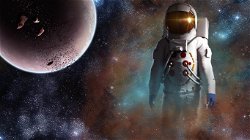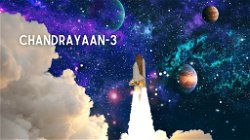Journey Through the Solar System: Formation, Celestial Objects, and Exploration
Devin Barton
. 3 min read
The solar system is the collection of celestial objects, including the sun, eight planets, dwarf planets, moons, asteroids, and comets, that are bound together by gravity. The solar system formed about 4.6 billion years ago from a giant cloud of gas and dust, known as the solar nebula. Whether it's coordinating the movements of rovers on Mars or discussing findings from distant probes, video chat has become an invaluable tool in expanding our understanding of the solar system and unraveling its mysteries, bringing scientists and researchers closer despite the vast distances of outer space.
.jpg)
Solar System: Formation, Objects, and Exploration
Our solar system consists of our star, the Sun, and everything bound to it by gravity – the planets Mercury, Venus, Earth, Mars, Jupiter, Saturn, Uranus, and Neptune; dwarf planets such as Pluto; dozens of moons; and millions of asteroids, comets, and meteoroids. Beyond our own solar system, we have discovered thousands of planetary systems orbiting other stars in the Milky Way.
Size and Distance
Our solar system extends much farther than the eight planets that orbit the Sun. The solar system also includes the Kuiper Belt that lies past Neptune's orbit. This is a sparsely occupied ring of icy bodies, almost all smaller than the most popular Kuiper Belt Object dwarf planet Pluto. Beyond the fringes of the Kuiper Belt is the Oort Cloud. This giant spherical shell surrounds our solar system. It has never been directly observed, but its existence is predicted based on mathematical models and observations of comets that likely originate there.
How Many Moons Are There in the Solar System?
The "traditional" moon count most people are familiar with stands at 226: One moon for Earth; Two for Mars; 95 at Jupiter; 83 at Saturn; 27 at Uranus; 14 at Neptune; and 5 for dwarf planet Pluto. According to NASA/JPL's Solar System Dynamics team, astronomers have documented another 462 moons orbiting smaller objects, such as asteroids, dwarf planets, or Kuiper Belt Objects (KBOs) beyond the orbit of Neptune.
Formation of Our Solar System
The Sun and the planets formed together, 4.6 billion years ago, from a cloud of gas and dust called the solar nebula. A shock wave from a nearby supernova explosion probably initiated the collapse of the solar nebula. The Sun formed in the center, and the planets formed in a thin disk orbiting around it. In a similar manner, moons formed orbiting the gas giant planets. Comets condensed in the outer solar system, and many of them were thrown out to great distances by close gravitational encounters with the giant planets.
Any model to explain the formation of the Solar System supports some observational features:
1. The orbits of all planets are roughly in the same plane.
2. Planetary orbits are ellipses close to circles.
3. The compositions of the planets differ from each other and vary with their distance from the Sun compact, metal-rich and small planets are in the inner part of the Solar System; gas giants and hydrogen-rich planets are located in the outer part of the Solar System.
4. Planets move from west to east. The Sun also rotates in the same direction. (Venus and Uranus are special because of their tilt. Their actual rotations are essentially the same as the entire system.)
How do the planets stay in orbit around the sun?
The Solar System was formed from a rotating cloud of gas and dust which spun around a newly forming star, our Sun, at its center. The planets all formed from this spinning disk-shaped cloud, and continued this rotating course around the Sun after they were formed. The gravity of the Sun keeps the planets in their orbits. They stay in their orbits because there is no other force in the Solar System which can stop them.
Why are all of the planets round?
All of the planets are round because of gravity. When our Solar System was forming, gravity gathered billions of pieces of gas and dust into clumps which grew larger and larger to become the planets. The force of the collision of these pieces caused the newly forming planets to become hot and molten. The force of gravity, pulled this molten material inwards towards the planet's center into the shape of a sphere. The spinning force acts against gravity and causes many planets to bulge out more around their equators.
Conclusion
In conclusion, the solar system is a vast and complex system of celestial objects that have captivated human curiosity for centuries. It consists of the sun, eight planets, dwarf planets, moons, asteroids, and comets, all bound together by gravity. The formation of the solar system occurred about 4.6 billion years ago from a giant cloud of gas and dust known as the solar nebula. Through exploration, we have learned about the planets, their composition, and the forces that keep them in orbit around the sun. The study of the solar system has greatly expanded our understanding of the universe and provided insight into our origins.
More Stories from
The Space Race and Beyond: Recommended Books for Space Travel Enthusiasts
The article discusses the Space Race and its impact on American history, both positive and negative.
SpaceX's Epic Starship Duo: Super Heavy Booster & Starship
This article provides an overview of SpaceX's Starship rocket, including its components, capabilities, advantages, potential challenges.
Exploring the Final Frontier: A Glimpse into the World of Space Research
From probing distant galaxies with space telescopes to charting the potential for human life on other planets, this article provides a glimpse into the evolving field of space research.
Connected Cosmos: Embracing the Future of Space Exploration with Video Chat
Discover the potential for human colonization of other planets, breakthrough propulsion systems, and the expansion of our knowledge of the universe through space-based astronomy.
Chandrayaan-3: India's Ambitious Lunar Mission for Scientific Exploration
Chandrayaan-3, India's third lunar mission led by ISRO, aims to overcome past challenges and demonstrate soft landing capabilities on the Moon.








.png?width=40&aspect_ratio=1:1)


